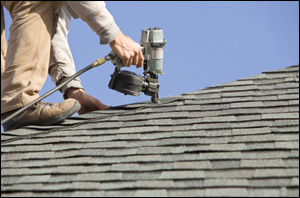 When contemplating whether you should, need, or must replace your roof it can be difficult to remove yourself from the equation and simply look at the facts. However, physical evidence that your roof needs replacing is not the only knowledge you need to factor into your decision. Is your heating bill higher than average? A good roof can cut costs almost in half. If you notice your bill is rising, it might be time to consider biting the bullet. That’s just one of many reasons you should consider replacing your roof.
When contemplating whether you should, need, or must replace your roof it can be difficult to remove yourself from the equation and simply look at the facts. However, physical evidence that your roof needs replacing is not the only knowledge you need to factor into your decision. Is your heating bill higher than average? A good roof can cut costs almost in half. If you notice your bill is rising, it might be time to consider biting the bullet. That’s just one of many reasons you should consider replacing your roof.
The following is a list of five telltale signs that your roof will need to be replaced:
1 – Curling shingles
When singles start to curl or claw it means they are becoming too rigid and may break off in a heavy wind or ice storm. Shingles usually begin to curl due to excessive heat or old age. If you’ve had a good roof for over 15-20 years, it is probably time to replace those old shingles again.
2 – Missing granules and bare spots
This can be a sign of poor drainage or too much sun exposure depending on your climate. Once the granule’s start to disappear, the rest of your roof will begin to age much faster, leading to shingle decay and eventually water damage. While water damage may not be a concern for everyone, it will lead to loss of air. Keeping heating and cooling costs down is a big factor in getting a new roof.
3 – Buckling shingles
Bucking shingles are waves of roofing on your house that aren’t flat. They usually run vertically up your roof’s slope. Buckling shingles are highly susceptible to wind and winter snow and ice damage because they can be torn off easily. Buckling happens in part to age, how the under layers were installed and wet weather. If you live in a particularly damp part of the country your roof may need to be replaced more often because of moss and algae that grows on your roof and separates the shingles.
4 – Broken or missing shingles
Broken and missing shingles weaken the overall stability of your roof system’s water shedding ability. The most common causes of broken or missing shingles are high wind and physical damage. Have there been any big winter storms in the last few years? If so, it might be time to inspect your roof again. In most situations, these can be repaired. However, deep-rooted damage underneath damaged shingles may necessitate replacing the roof.
5 – Damaged flashings
Flashings are located around skylights, chimney eaves, or anything on top of your roof. Over time flashings can lift and separate because of expansion and contraction from hot and cold weather. Because they protect weak areas from letting water seep in, over time as it separates from the chimney or other crevice it spells trouble. When this happens it can allow water to enter and thus damage insulation or sheet rock. You want to catch this before it becomes another costly home remodel.
About the author: Avery Lane is a freelance writer from Portland, Oregon with an interest in home improvement. If you need to replace your roof, check out these guides to new roof cost and metal roofing prices.